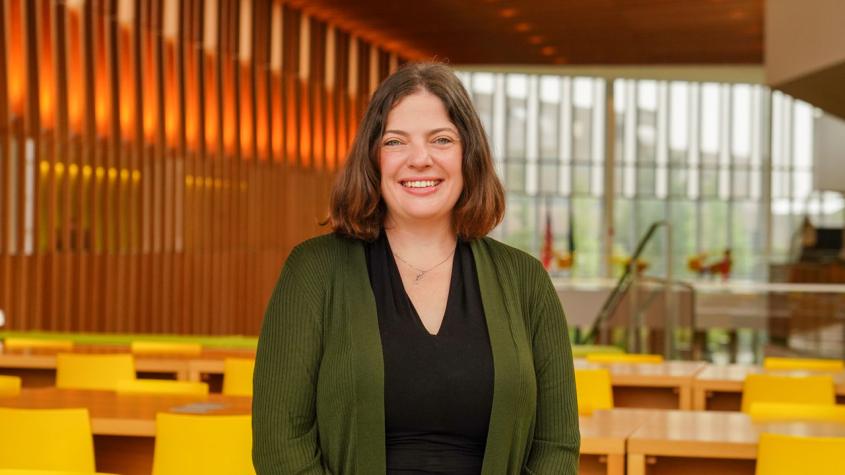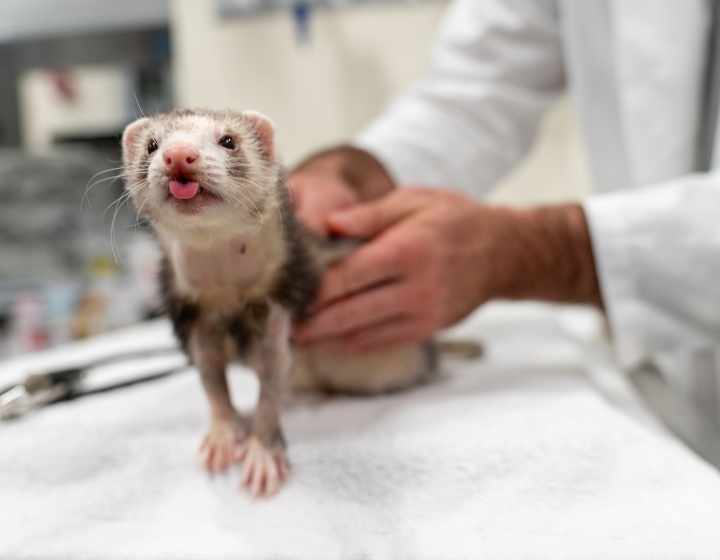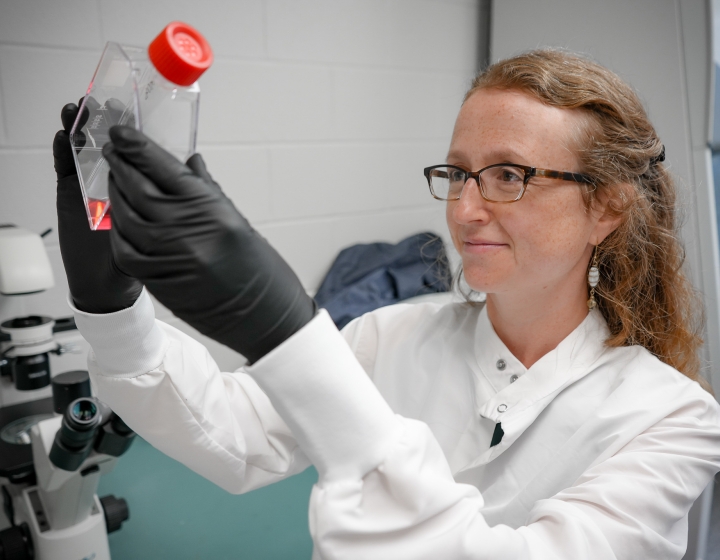New faculty profile: Dr. Sarah Robbins
The Cornell University College of Veterinary Medicine (CVM) has recently welcomed many new faculty members to our academic departments, each one bringing a unique set of skills and experience that enriches our college every day. In this Q&A series, you'll get to know their interests, expertise and more.
Dr. Sarah Robbins, assistant clinical professor in the Section of Emergency and Critical Care
Q: What has been your path leading up to Cornell?
A: I attended the University of Georgia College of Veterinary Medicine, graduating with my D.V.M. in 2014. I then spent one year practicing emergency medicine in Indianapolis, Indiana, prior to starting an emergency and critical care specialty internship at Cornell. I was happy to return for a residency shortly after, and am delighted to be staying on as faculty, helping new interns and residents hone their skills in emergency and critical care medicine.
Q: What drew you to CVM?
A: Initially, it was the opportunity to advance my knowledge during the internship and residency by learning from leaders in the field of emergency and critical care medicine. Now, it’s the ability to work as part of a team dedicated to advancing medicine and training the next generation of leaders. I really enjoy working in such a collaborative environment and being part of a cohesive group.
Q: What is your clinical/scientific area of expertise?
A: My research currently focuses on antibiotic usage and antimicrobial resistance. In order to retain the ability to fight life-threatening disease with antibiotics, we need to limit inappropriate usage which contributes to resistance. This entails surveillance of current antimicrobial usage and resistance patterns, discovery of biomarkers that can be used to guide antimicrobial therapy, changes in policy to encourage appropriate antimicrobial usage and education of new veterinarians to the importance of good antimicrobial stewardship.
Q: What drew you into this area? Were there any specific experiences, mentors, or influences that helped guide you?
A: My interest in research started in undergrad, and developed while attaining my master of science in animal science from the University of Georgia. In between my master’s and veterinary school I was also able to participate in a short research project with a pharmaceutical company and later went on to attain some experience in vaccine development. I was fortunate to be involved in both a retrospective and prospective study during my residency, and was drawn to antimicrobial resistance by my mentors Julie Menard and Robert Goggs.
Q: What past professional work are you most proud of and why?
A: I am very proud of finishing my residency and becoming board certified while also being a mother. My daughter was born five months into my residency and grew up watching mama study (and occasionally sleep). This was in large part due to the assistance of my own mother, without whom I would not have been able to pursue a residency in a field that required many overnights, long and unpredictable hours, and plenty of studying. I believe women can act as a community to support one another through our unique work-life “balance.” We work in a field that, despite being comprised by a majority of women, also has continued wage gaps, and the perception that having children will negatively impact your career and, in some specialties, a decreased likelihood of holding a prestigious academic title or rank. I hope to be part of an emerging network of supportive women in veterinary medicine, that aims to help women reach their goals via the provision of resources and mentorship and the promotion of gender equity, retention and career advancement.
Q: What about your clinical work, research or teaching innovations are you most excited for or proud of and why?
A: I am excited to continue my work with antimicrobial resistance/surveillance. I am also excited to be involved in dialysis and am currently participating in the hemodialysis academy, and will be participating again this coming fall. I take pride in coordinating our monthly resident physiology rounds, which are interactive sessions aimed at increasing resident understanding of core physiologic concepts. In addition, I will be organizing continuing education sessions for our hospital technicians — without whom our hospital could not function. It is also wonderful to be part of the course design group for Block III, which helps veterinary students develop a firm grasp on physiologic, pharmacologic, pathologic, histologic and biochemical concepts important in health and disease.
Q: What impacts or applications do you hope to see your work have on the world, or on human, animal or planetary health?
A: I hope that my work on antimicrobial stewardship will contribute to One Health and minimize development of antimicrobial resistance to antibiotics. One Health recognizes the importance of the interconnection between people and animals and has the goal of optimal health outcomes using a transdisciplinary approach.
Q: What clinical or scientific questions are you looking to answer next, or areas you plan to explore?
A: I am working on developing a curriculum for veterinary students in antimicrobial resistance and stewardship, with the aim of using assessments to gain certification in antimicrobial stewardship. This will be important in equipping new graduates with the information they need to make appropriate and responsible decisions surrounding antimicrobial usage. I am also working with a motivated group of faculty investigating methods to improve veterinary student quality of life. We work in a field that has to endure numerous pressures both during veterinary medical education and throughout our careers. Investigating ways to ensure that the newest members of our profession have experience in maintaining self-care, and are supported in this effort by our curriculum, will be of benefit not only to our students but also to our profession.
Q: What’s something most people don’t know about you?
A: I recently completed training to be part of the New York State Veterinary Medical Society chapter of the League of VetaHumanz. This program recognizes the importance of diversity, equity and inclusion to veterinary medicine. Research has shown that career choices, and a student’s likelihood of identifying with certain profession, are made at a very early age. The League of Veta-Humans equips veterinarians like me with lesson plans that fit in with local elementary curricula, in order to allow young people to identify with our profession and feel empowered and supported to become veterinarians themselves.
Q: What’s the best part of being a clinician/scientist?
A: Always learning. There is always a new question that needs answering, a new skill that needs to be learned. It is very fulfilling to be part of a profession where you are continually growing and evolving into a better version of yourself.
Q: What’s the most challenging part?
A: Always learning! Critical patients are dynamic and complicated. They often have multiple disease processes occurring simultaneously and their treatment plans represent a balancing act that is unique to each patient. Of course, this is precisely what makes critical care medicine so rewarding.
Q: What are the benefits of working at CVM? At Cornell?
A: Collaboration — I get to work with an amazing group of doctors that shares my passion for veterinary medicine. Whether it be working together to meet the needs of an individual patient, or working together on a research project to discover better ways to treat our patients, there is always a group of interested and dedicated doctors willing to devote their time to making medicine better.





